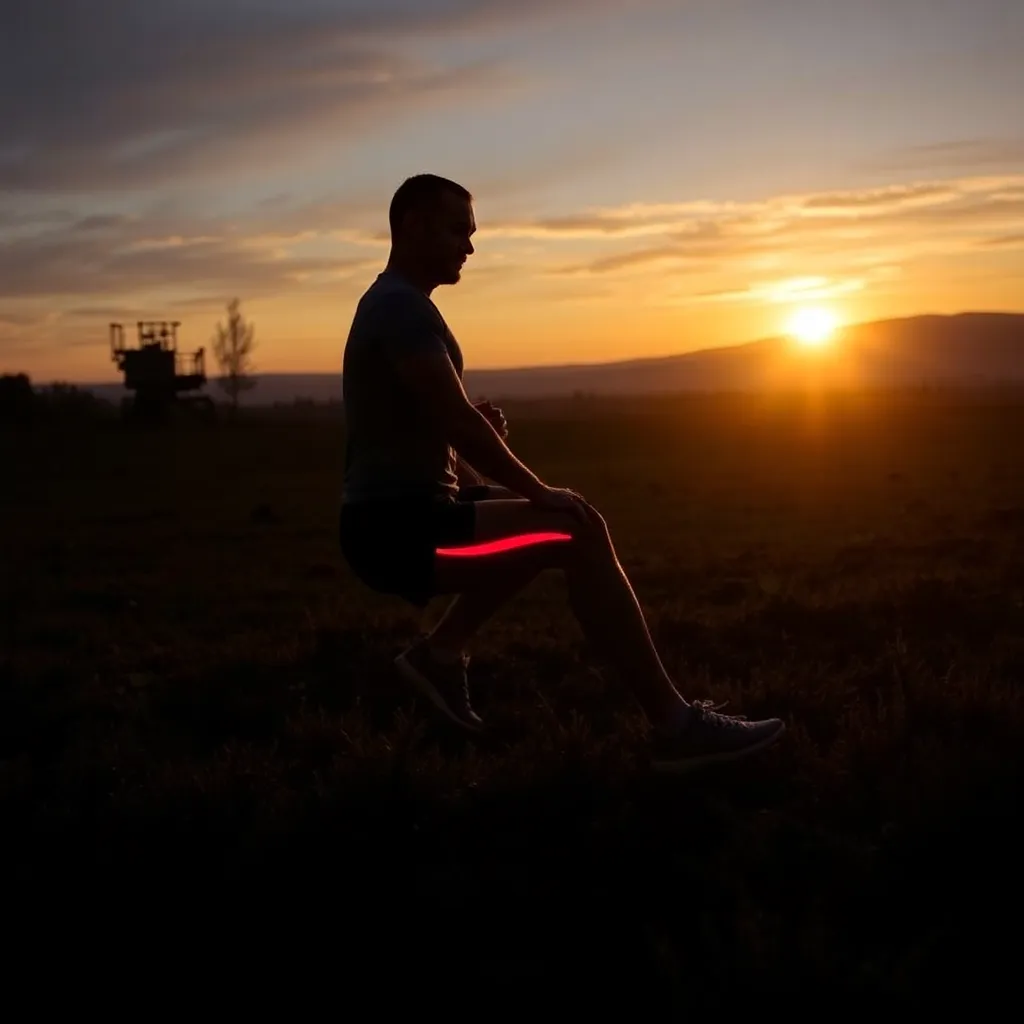
Researchers have discovered that the duration of muscle contraction, rather than the intensity, plays a crucial role in how the hamstring muscles respond to fatigue. This finding could have significant implications for developing effective injury prevention and rehabilitation protocols for athletes. The study, led by a team of researchers from Spain and Portugal, used cutting-edge ultrasound technology to investigate the changes in the active stiffness of the biceps femoris long head (BFlh) and semitendinosus (ST) muscles during fatiguing knee flexion exercises. The results suggest that the ST muscle, which is known to be more susceptible to injury, experiences a significant decrease in active stiffness during prolonged low-intensity contractions, while the BFlh muscle remains relatively unaffected. This insight into the biomechanical load distribution between the hamstring muscles could help sports scientists and clinicians better understand the mechanisms behind hamstring injuries and develop more targeted interventions. Hamstring injuries are a common and persistent problem in many sports, and this research provides valuable new clues to help tackle this challenge.
Understanding the Hamstring Muscles
The hamstring muscles are a group of three muscles located at the back of the thigh, namely the biceps femoris, semitendinosus, and semimembranosus. These muscles play a crucial role in human locomotion, as they are responsible for knee flexion and hip extension, which are essential movements in activities like running, sprinting, and jumping. However, the hamstring muscles are also highly susceptible to injury, especially the biceps femoris long head (BFlh), which is the most commonly injured hamstring muscle in sports such as football and rugby.
Measuring Muscle Stiffness with Shear Wave Elastography
To better understand the mechanisms behind hamstring injuries, the researchers in this study used a cutting-edge ultrasound-based technique called shear wave elastography. This technology allows for the non-invasive assessment of a muscle’s active stiffness, which is the muscle’s resistance to deformation during contraction. By measuring the active stiffness of the BFlh and semitendinosus (ST) muscles, the researchers were able to gain insights into how the load is distributed between these two key hamstring muscles during fatiguing exercises.

The Role of Contraction Duration vs. Intensity
The study involved 18 recreationally active male participants who performed two experimental sessions, each involving a submaximal isometric knee flexion exercise until exhaustion. In one session, the exercise was performed at 20% of the participants’ maximal voluntary isometric contraction (MVIC), while in the other session, it was performed at 40% of MVIC.
The researchers found that the active stiffness of the ST muscle decreased significantly during the 20% MVIC session, starting from around 90% of the contraction duration and continuing until the end of the exercise. In contrast, the active stiffness of the BFlh muscle remained largely unchanged throughout the 20% MVIC session.

Fig. 1
Interestingly, when the exercise was performed at 40% MVIC, no significant changes in the active stiffness of either the BFlh or ST muscles were observed during the entire contraction duration. This suggests that the duration of the contraction, rather than the intensity, is the key factor in inducing changes in the mechanical properties of the hamstring muscles during fatigue tasks.
Implications for Injury Prevention and Rehabilitation
These findings have important implications for the prevention and rehabilitation of hamstring injuries. The observed decrease in ST active stiffness during prolonged low-intensity contractions suggests that this muscle may be more susceptible to strain or injury under these conditions. This could explain why hamstring injuries are so common in sports that involve repeated sprinting and high-intensity running, where the hamstring muscles are subjected to prolonged, low-intensity contractions.

Fig. 2
By understanding the specific biomechanical responses of the hamstring muscles to different types of fatigue tasks, sports scientists and clinicians can develop more targeted injury prevention and rehabilitation programs. For example, incorporating exercises that challenge the hamstring muscles at higher intensities, but for shorter durations, may help to maintain the optimal balance of active stiffness between the BFlh and ST muscles, potentially reducing the risk of injury.
Exploring Individual Variability and Future Research
The study also highlighted the high degree of individual variability in the active stiffness responses of the hamstring muscles, particularly in the ST muscle during the 40% MVIC session. This suggests that individual factors, such as muscle fiber composition or neural control strategies, may play a significant role in how the hamstring muscles respond to fatigue.
Future research in this area could explore these individual differences in more depth, as well as investigate the effects of different types of fatiguing exercises, such as those involving both knee flexion and hip extension, on the biomechanical load distribution within the hamstring muscle group. Additionally, studying the interplay between the hamstring muscles and their antagonist muscles, the quadriceps, could provide further insights into the complex neuromuscular mechanisms underlying hamstring injuries.
Overall, this study represents an important step forward in our understanding of how the hamstring muscles respond to fatigue, and it opens up new avenues for the development of more effective injury prevention and rehabilitation strategies for athletes and physically active individuals.
Author credit: This article is based on research by Antonio Martínez-Serrano, Régis Radaelli, Tomás T. Freitas, Pedro E. Alcaraz, Sandro R. Freitas.
For More Related Articles Click Here
